
High school graduates pursuing higher education have a range of colleges and universities to choose from. Prospective students consider the cost of tuition, courses offered, school reputation, the scholarship of professors, success of alumni, the school’s location, and many other considerations.
Though what students learn in school is what eventually leads to their degree, a college experience is much more than what happens in the classroom. What the college town or city has to offer is arguably one of the most important aspects of this all-important life choice.
To identify the best college towns in America, 24/7 Wall St. relied on a previous analysis that identified the 250 best U.S. cities to live, based on a range of social, economic, and health factors. Of those areas, we identified the 25 cities with the highest postsecondary enrollment as a percentage of the population. At least 20% of residents in all 25 of these cities are currently enrolled in a postsecondary institution.
What makes a college town appealing is largely subjective. However, the best areas for college students should not be so different from the best areas for anyone else. These cities should be relatively prosperous and offer a range of amenities. And while the cities on this list with massive student populations are certainly not necessarily the best college towns, a large body of college-enrolled residents likely brings certain benefits for university students.
For example, from the perspective of a college student, a high percentage of residents enrolled in higher education institutions likely means more opportunity for diverse experiences with peers. Further, the cities with relatively large student populations are more likely to have economies — services, amenities, and infrastructure — that directly serve students.
Click here to see the best college towns in America.
Click here to see our detailed findings and methodology.
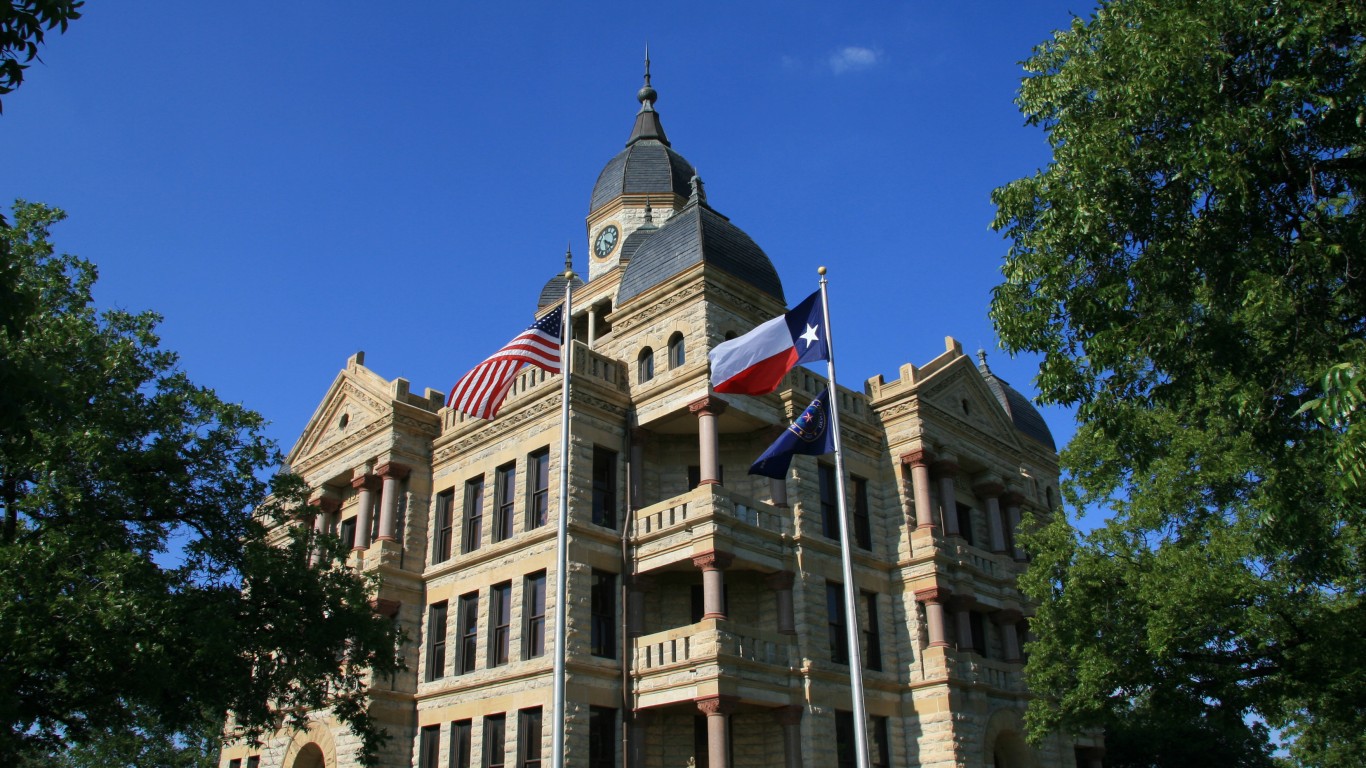
25. Denton, Texas
> College enrollment: 21.2% (28,388)
> Adults with a bachelor’s degree: 40.5%
> No. of colleges and universities in area: 3
> 2017 annual unemployment: 3.1%
> Bars per 100K: 20.2
[in-text-ad]
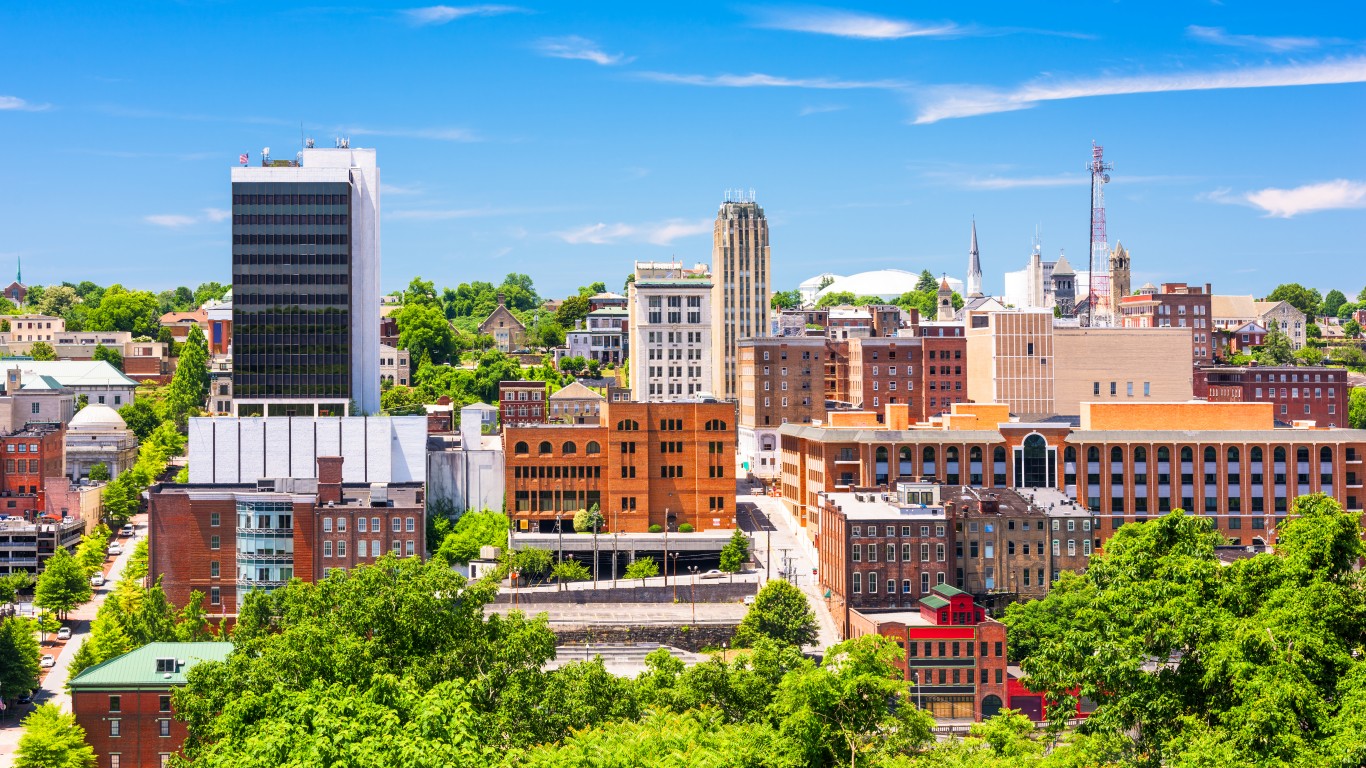
24. Lynchburg, Virginia
> College enrollment: 21.7% (17,379)
> Adults with a bachelor’s degree: 33.4%
> No. of colleges and universities in area: 8
> 2017 annual unemployment: 5.0%
> Bars per 100K: 1.2
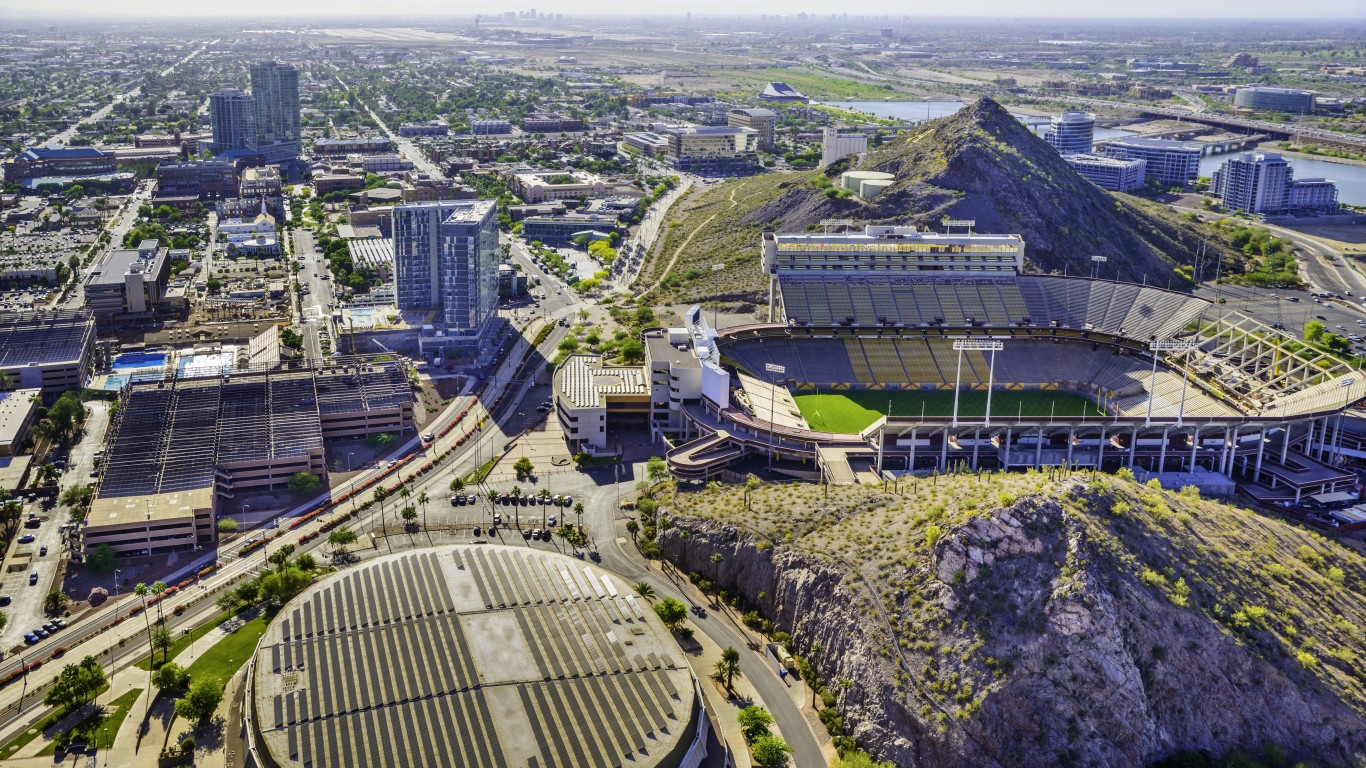
23. Tempe, Arizona
> College enrollment: 23.4% (42,732)
> Adults with a bachelor’s degree: 45.5%
> No. of colleges and universities in area: 14
> 2017 annual unemployment: 3.9%
> Bars per 100K: 17.0
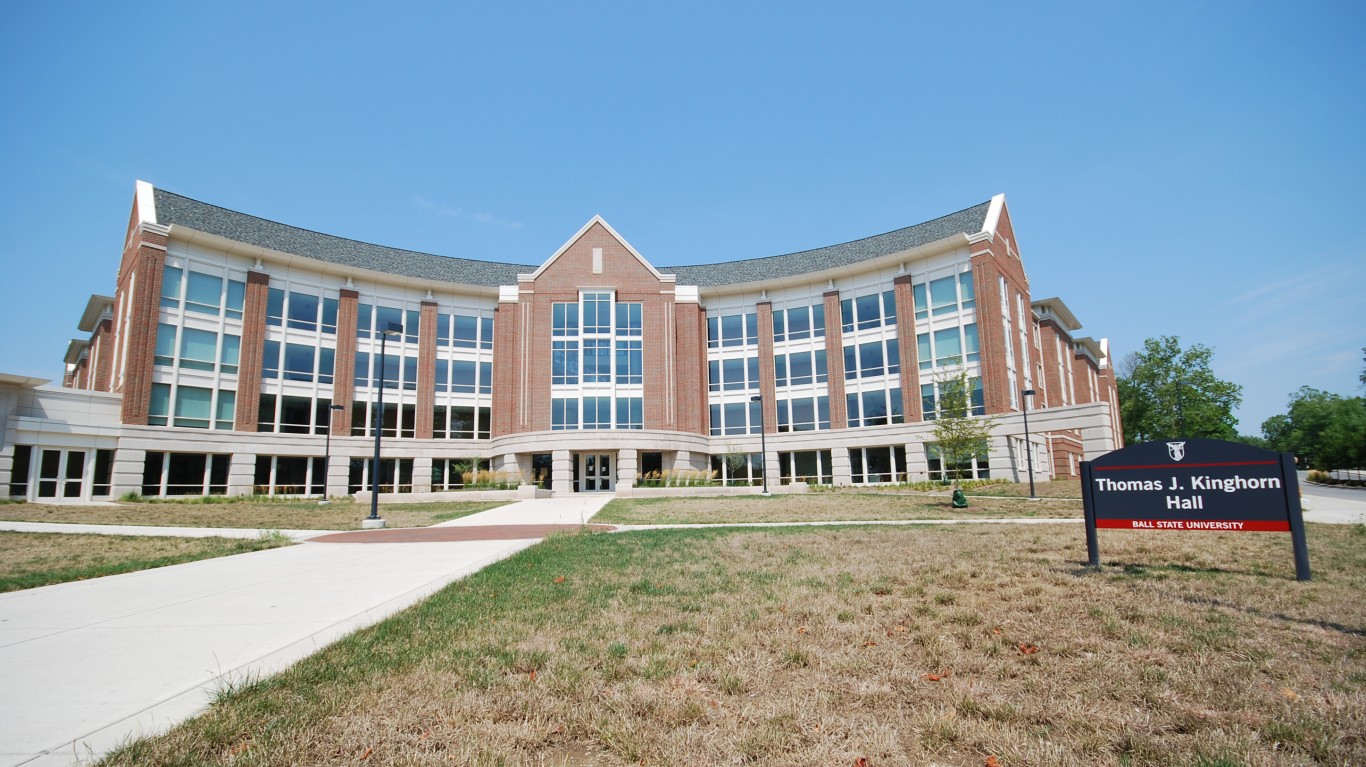
22. Muncie, Indiana
> College enrollment: 24.3% (16,719)
> Adults with a bachelor’s degree: 24.9%
> No. of colleges and universities in area: 1
> 2017 annual unemployment: 4.5%
> Bars per 100K: 23.3
[in-text-ad-2]

21. Kalamazoo, Michigan
> College enrollment: 25.4% (19,319)
> Adults with a bachelor’s degree: 31.3%
> No. of colleges and universities in area: 6
> 2017 annual unemployment: 5.1%
> Bars per 100K: 22.4

20. Columbia, Missouri
> College enrollment: 25.7% (30,953)
> Adults with a bachelor’s degree: 51.9%
> No. of colleges and universities in area: 7
> 2017 annual unemployment: 2.6%
> Bars per 100K: 21.6
[in-text-ad]
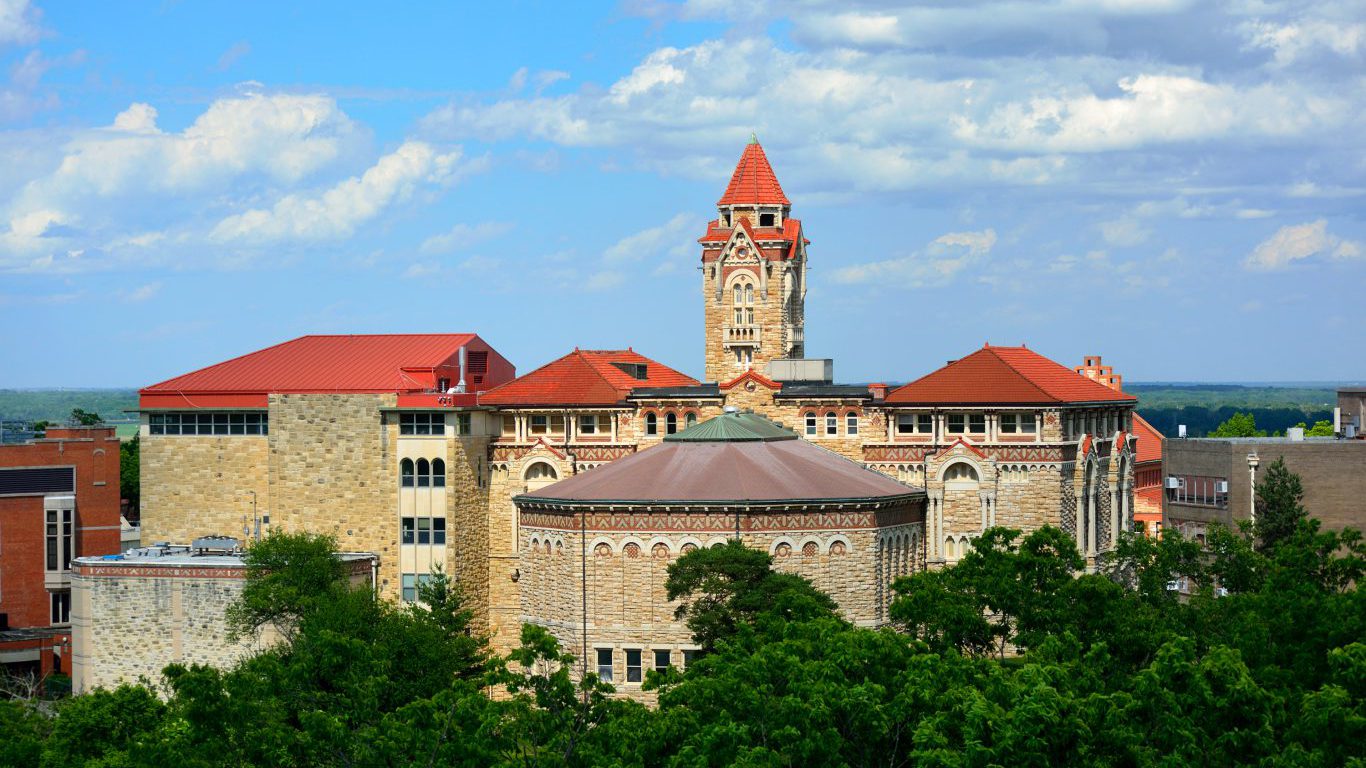
19. Lawrence, Kansas
> College enrollment: 25.8% (24,599)
> Adults with a bachelor’s degree: 57.1%
> No. of colleges and universities in area: 5
> 2017 annual unemployment: 3.1%
> Bars per 100K: 33.6
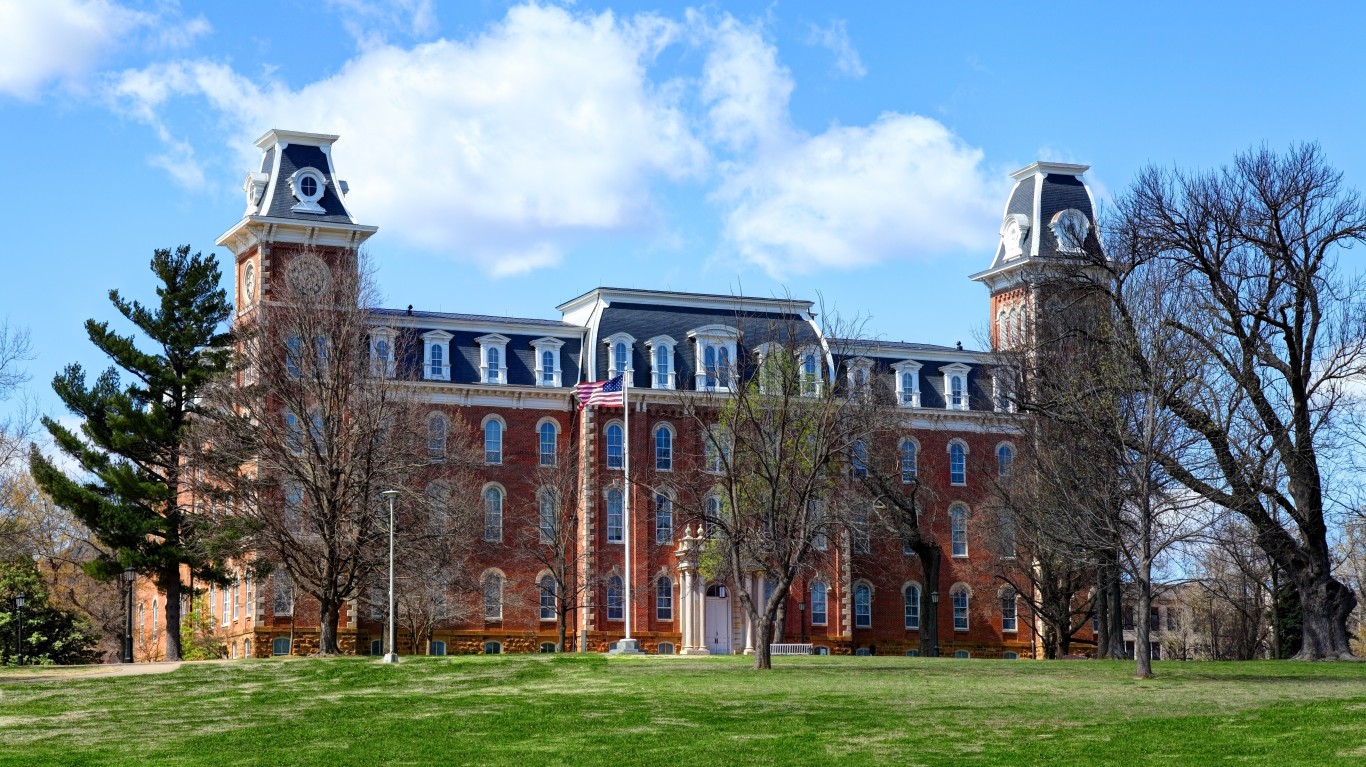
18. Fayetteville, Arkansas
> College enrollment: 25.9% (21,717)
> Adults with a bachelor’s degree: 49.4%
> No. of colleges and universities in area: 4
> 2017 annual unemployment: 2.6%
> Bars per 100K: 29.8
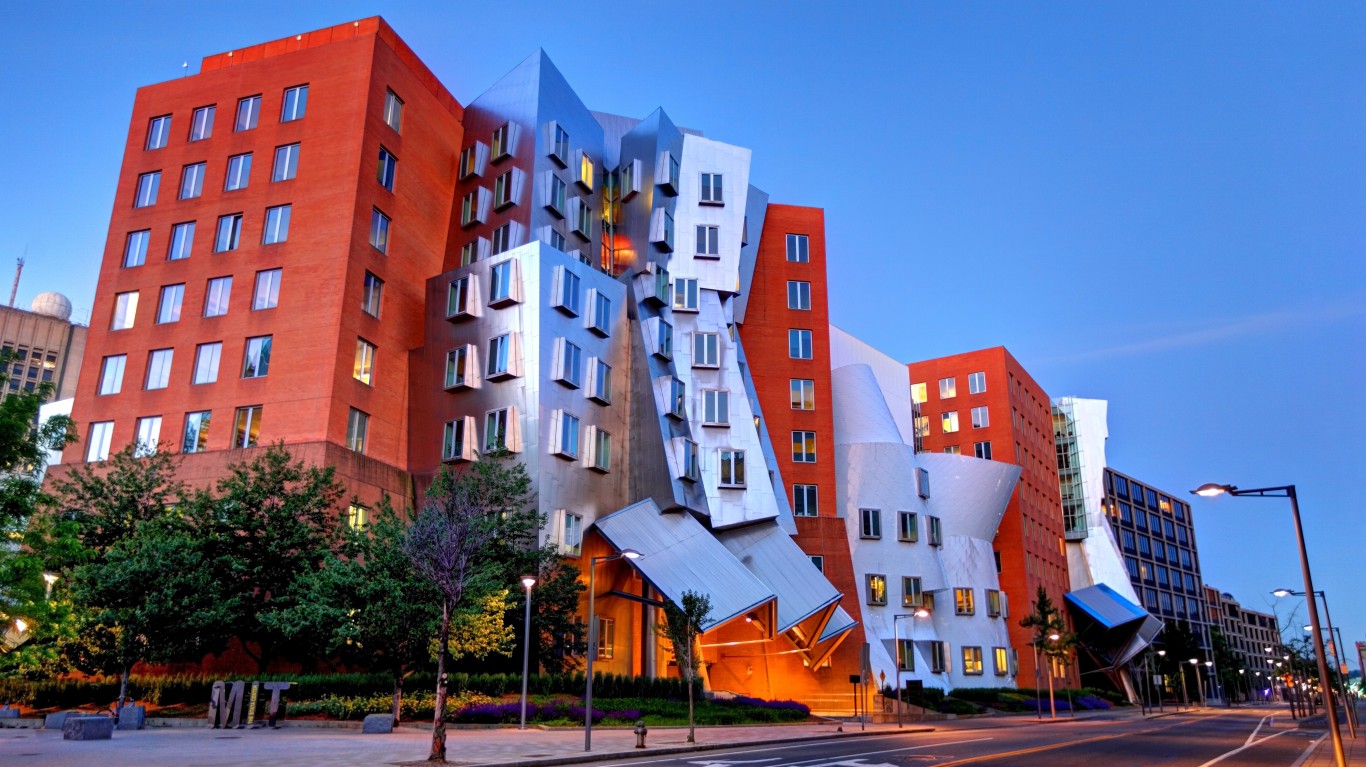
17. Cambridge, Massachusetts
> College enrollment: 26.6% (29,388)
> Adults with a bachelor’s degree: 74.1%
> No. of colleges and universities in area: 8
> 2017 annual unemployment: 2.4%
> Bars per 100K: 14.5
[in-text-ad-2]

16. Athens-Clarke County, Georgia
> College enrollment: 27.1% (33,437)
> Adults with a bachelor’s degree: 41.0%
> No. of colleges and universities in area: 3
> 2017 annual unemployment: 4.8%
> Bars per 100K: 38.1

15. Boulder, Colorado
> College enrollment: 28.0% (30,303)
> Adults with a bachelor’s degree: 73.0%
> No. of colleges and universities in area: 7
> 2017 annual unemployment: 2.3%
> Bars per 100K: 15.7
[in-text-ad]
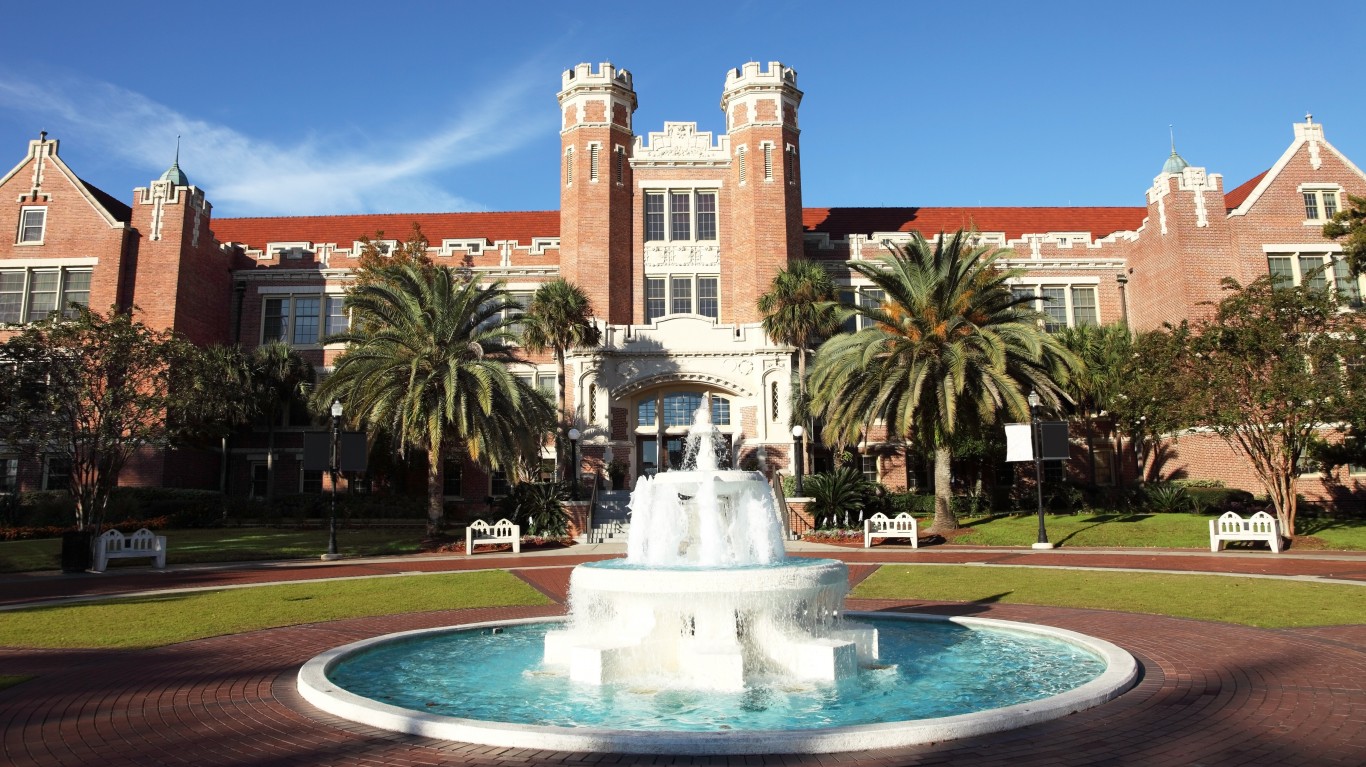
14. Tallahassee, Florida
> College enrollment: 28.4% (54,268)
> Adults with a bachelor’s degree: 49.6%
> No. of colleges and universities in area: 8
> 2017 annual unemployment: 4.2%
> Bars per 100K: 14.1
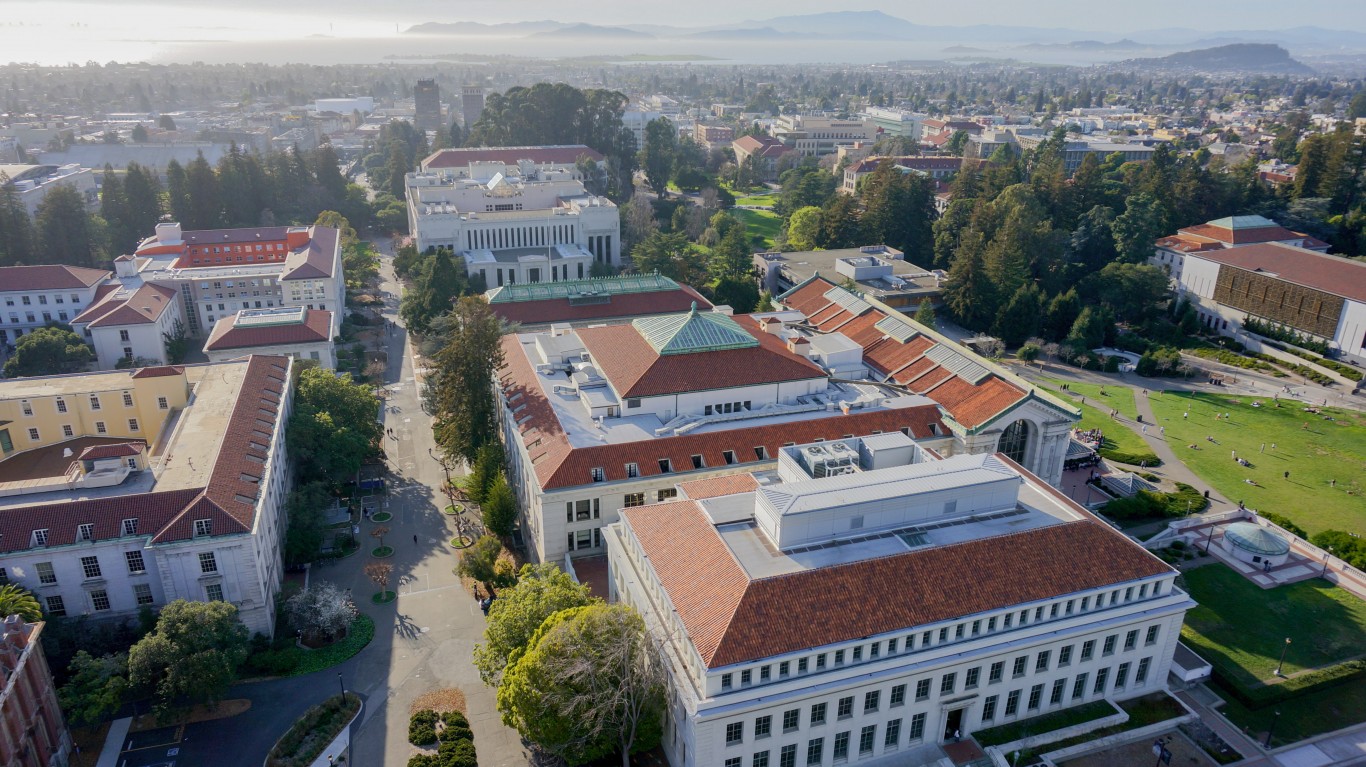
13. Berkeley, California
> College enrollment: 28.5% (34,502)
> Adults with a bachelor’s degree: 75.8%
> No. of colleges and universities in area: 12
> 2017 annual unemployment: 3.5%
> Bars per 100K: 11.5
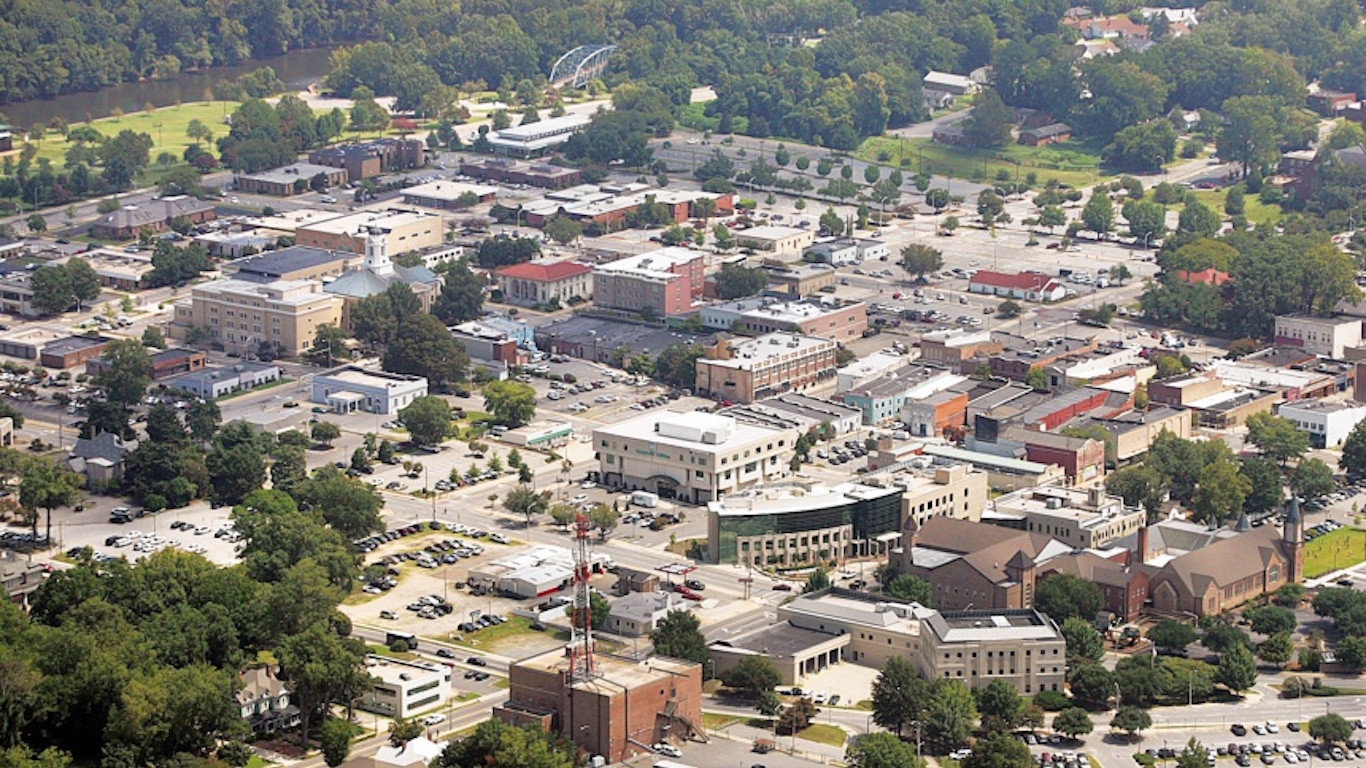
12. Greenville, North Carolina
> College enrollment: 28.8% (26,357)
> Adults with a bachelor’s degree: 35.4%
> No. of colleges and universities in area: 4
> 2017 annual unemployment: 5.3%
> Bars per 100K: 10.9
[in-text-ad-2]

11. Burlington, Vermont
> College enrollment: 29.2% (12,411)
> Adults with a bachelor’s degree: 50.9%
> No. of colleges and universities in area: 8
> 2017 annual unemployment: 2.5%
> Bars per 100K: 7.0

10. Champaign, Illinois
> College enrollment: 29.7% (25,710)
> Adults with a bachelor’s degree: 53.3%
> No. of colleges and universities in area: 3
> 2017 annual unemployment: 4.2%
> Bars per 100K: 35.8
[in-text-ad]
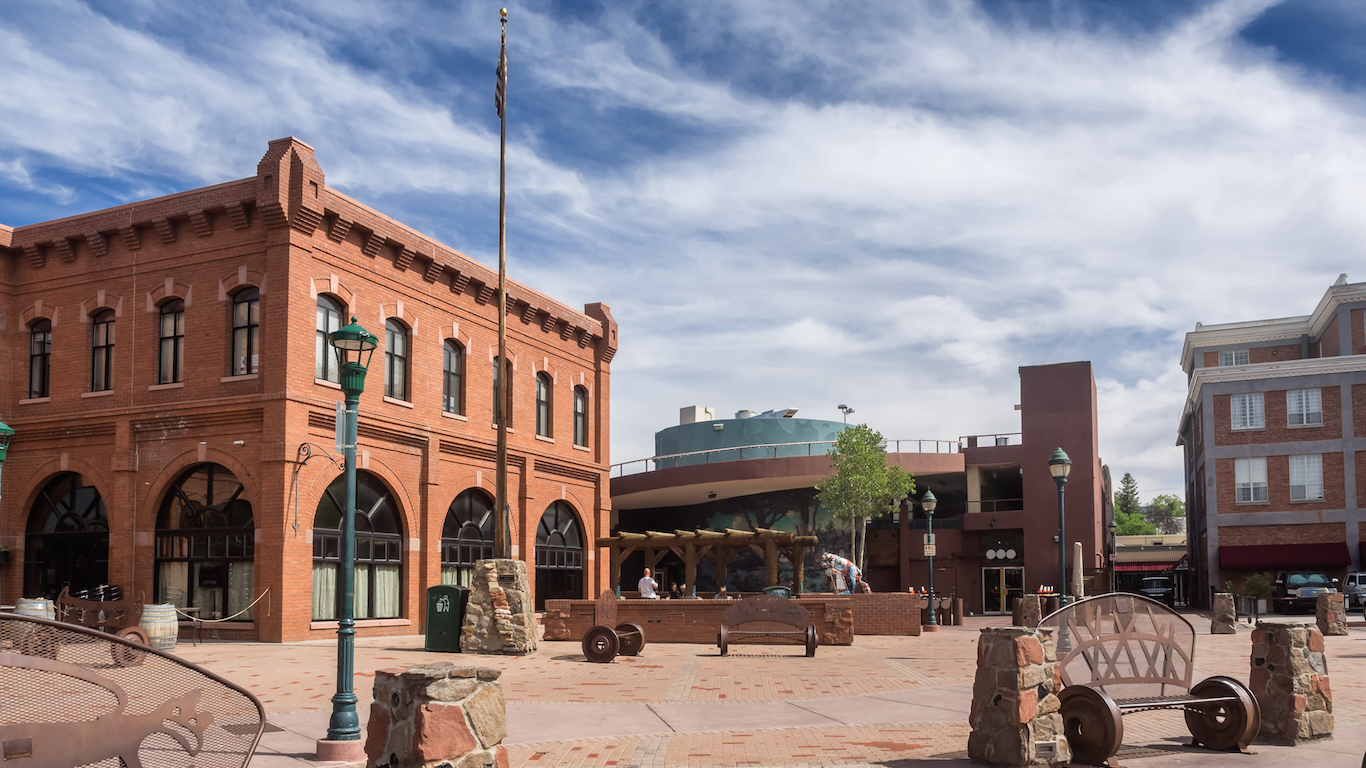
9. Flagstaff, Arizona
> College enrollment: 30.1% (21,483)
> Adults with a bachelor’s degree: 45.5%
> No. of colleges and universities in area: 4
> 2017 annual unemployment: 4.0%
> Bars per 100K: 21.0

8. Provo, Utah
> College enrollment: 32.7% (38,166)
> Adults with a bachelor’s degree: 40.7%
> No. of colleges and universities in area: 9
> 2017 annual unemployment: 2.8%
> Bars per 100K: 1.7
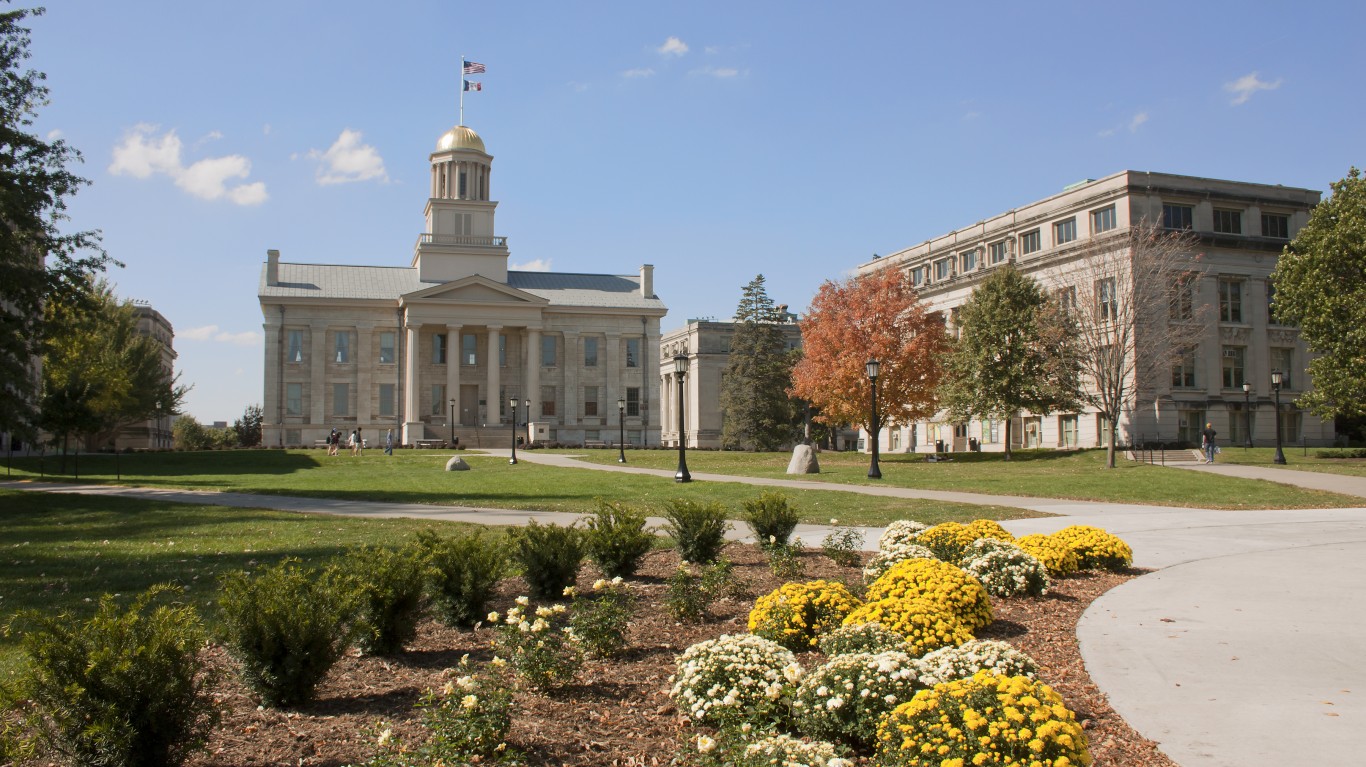
7. Iowa City, Iowa
> College enrollment: 33.5% (24,945)
> Adults with a bachelor’s degree: 58.5%
> No. of colleges and universities in area: 3
> 2017 annual unemployment: 2.5%
> Bars per 100K: 39.0
[in-text-ad-2]

6. Ann Arbor, Michigan
> College enrollment: 34.3% (41,414)
> Adults with a bachelor’s degree: 76.5%
> No. of colleges and universities in area: 7
> 2017 annual unemployment: 3.0%
> Bars per 100K: 17.4
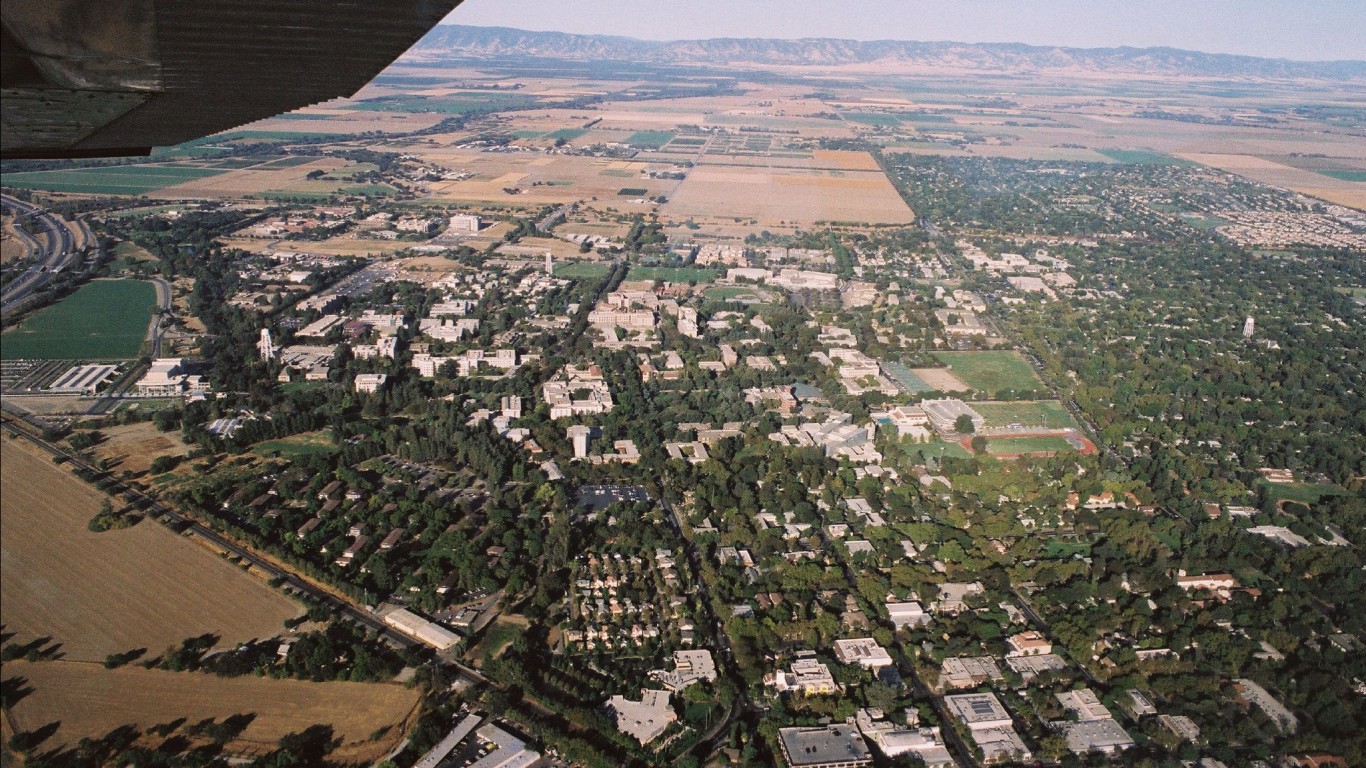
5. Davis, California
> College enrollment: 34.9% (23,798)
> Adults with a bachelor’s degree: 71.2%
> No. of colleges and universities in area: 1
> 2017 annual unemployment: 3.3%
> Bars per 100K: 2.9
[in-text-ad]
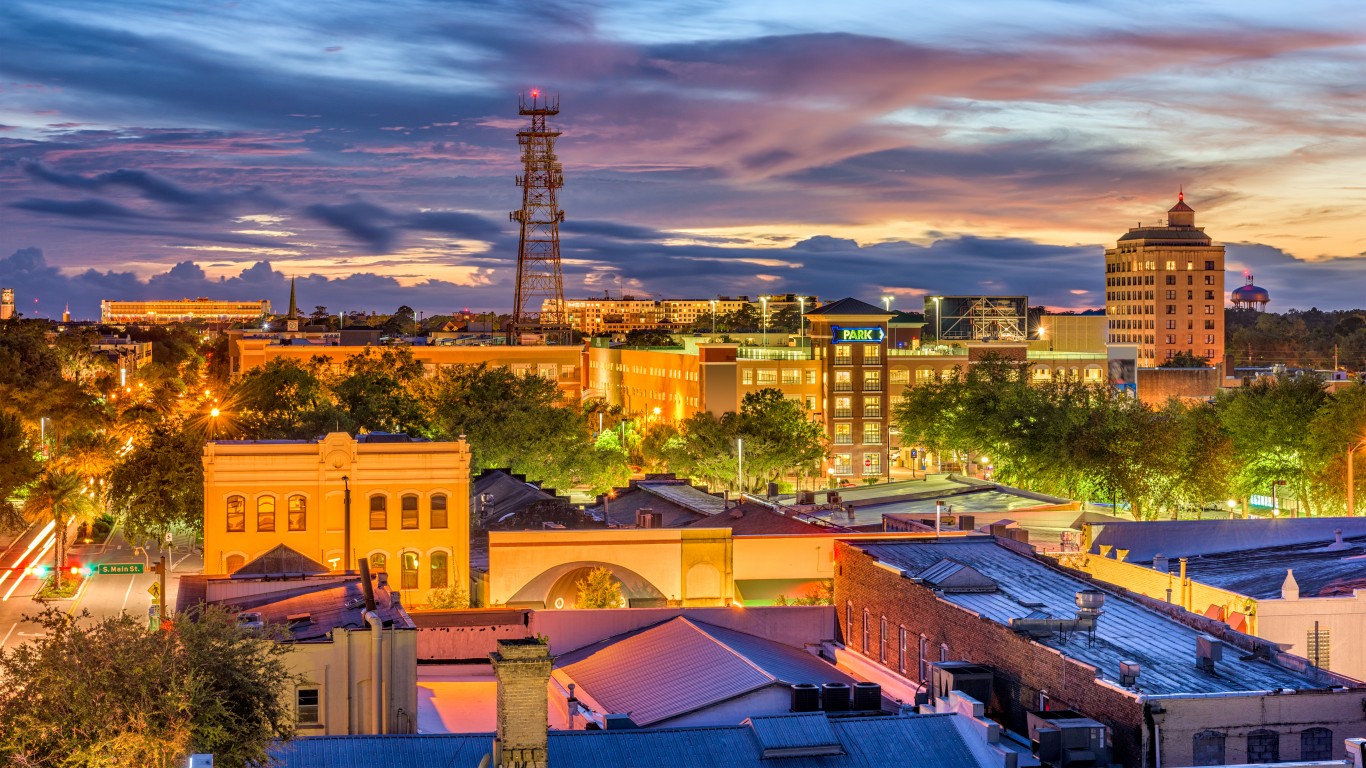
4. Gainesville, Florida
> College enrollment: 35.3% (46,454)
> Adults with a bachelor’s degree: 42.7%
> No. of colleges and universities in area: 9
> 2017 annual unemployment: 4.1%
> Bars per 100K: 22.0
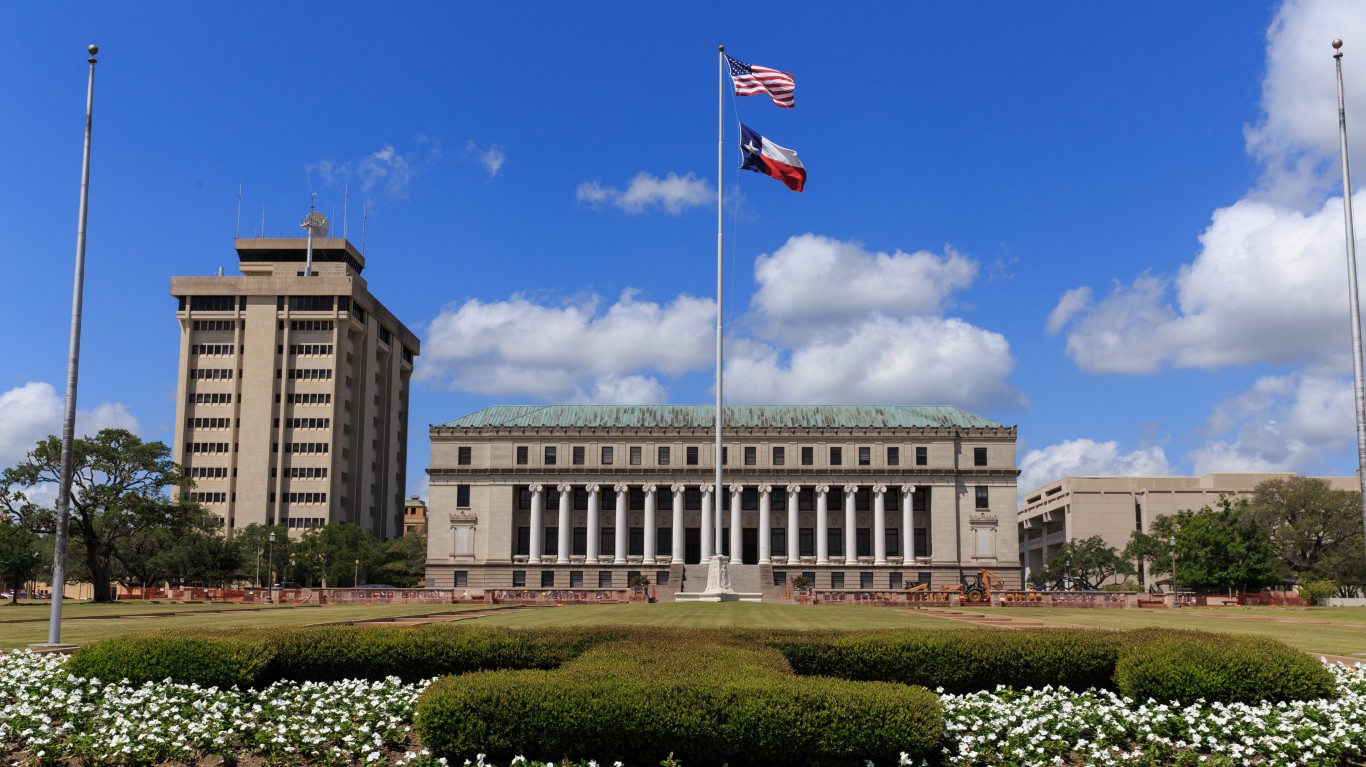
3. College Station, Texas
> College enrollment: 40.7% (45,587)
> Adults with a bachelor’s degree: 57.7%
> No. of colleges and universities in area: 2
> 2017 annual unemployment: 3.1%
> Bars per 100K: 23.2
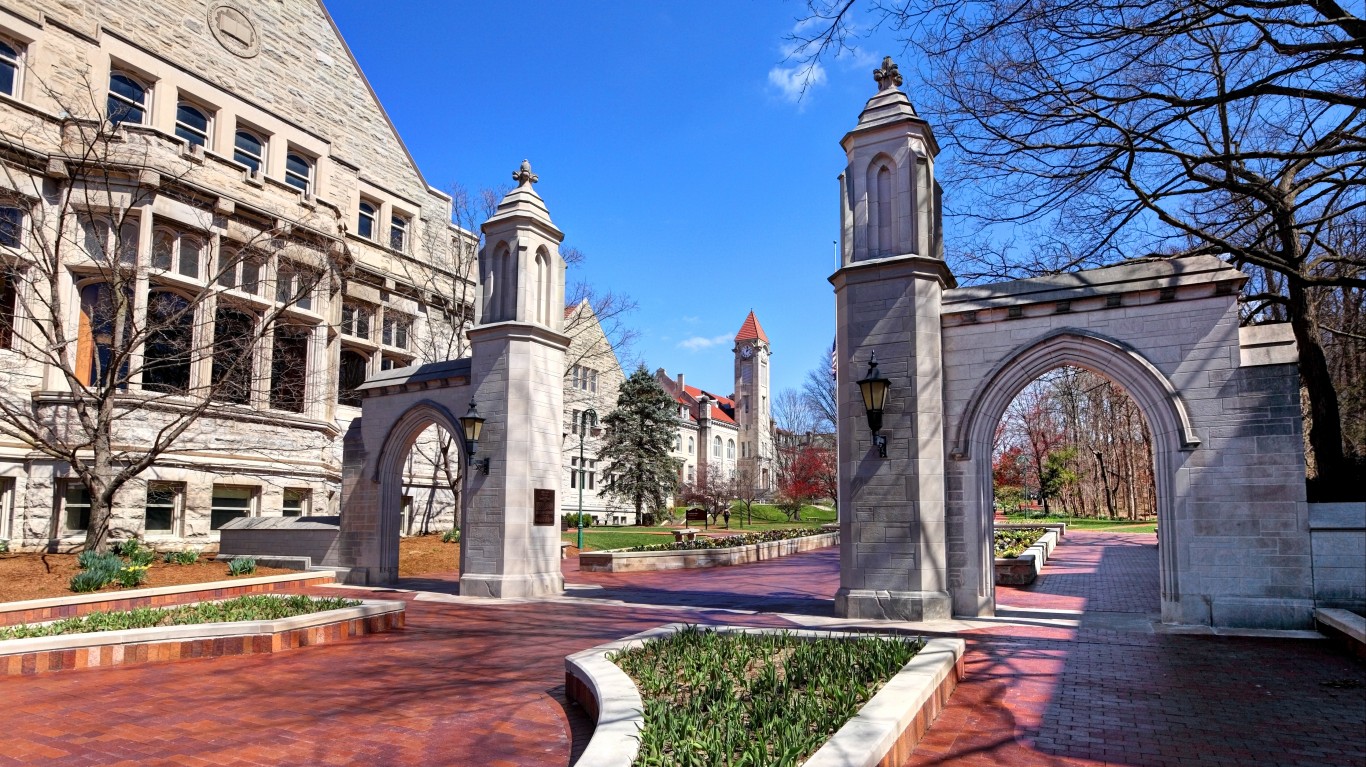
2. Bloomington, Indiana
> College enrollment: 43.0% (37,302)
> Adults with a bachelor’s degree: 50.2%
> No. of colleges and universities in area: 2
> 2017 annual unemployment: 3.9%
> Bars per 100K: 19.6
[in-text-ad-2]

1. Ames, Iowa
> College enrollment: 43.5% (28,780)
> Adults with a bachelor’s degree: 66.7%
> No. of colleges and universities in area: 2
> 2017 annual unemployment: 1.9%
> Bars per 100K: 25.7
Detailed Findings
Some of the country’s largest and most productive research institutions dominate the economies of many of these cities. For example, in Middlesex County, which contains Cambridge, there are close to 50 colleges and universities that employ thousands of area workers.
Of the 25 cities on this list only five had unemployment rates that exceeded the national average rate of 4.4% in 2017.
Like Cambridge, higher education institutions in Ann Arbor, Michigan, contribute to a healthy economy. An average of just 3% of the city’s labor force was unemployed in 2017, one of the lowest unemployment rates of all U.S. cities.
The city also has the third highest share of adults with at least a bachelor’s degree — more than 75% of the adult population has a college degree. In general, college towns tend to have higher college attainment rates than the nation as a whole. Of the cities on this list, all but two have a higher percentage of adults with at least a bachelor’s degree than the national rate of 31.3%.
Ann Arbor also has an expansive choice of restaurants, bodegas, and cafes, as well as quite a few recreational centers. This is the case in most of the best college towns. We also looked at bars specifically — a college town would not be complete without a healthy selection of drinking establishments. Nationwide, there are just over 12 for every 100,000 Americans. In 19 of the 25 cities on this list, the concentration of bars exceeds that national proportion.
A low or at least reasonable cost of living is helpful to any resident — perhaps especially so to college students who may not have reliable income. The average cost of living in all but five of the 25 cities is lower than the national average, though there are some notable exceptions. The cost of housing, for example, in the Los Angeles, Boston, Dallas, and Boulder, Colorado, areas is substantially higher than across the nation.
Methodology
To identify the best college towns in America, 24/7 Wall St., 24/7 Wall St. considered the roughly 550 cities that the U.S. Census Bureau reported as having populations of more than 65,000 residents in 2016. Based on our analysis of the nation’s best cities to live in (click here to see full methodology), we reviewed the 250 top cities. Of those areas, we identified the 25 cities with the highest postsecondary enrollment as a percentage of the population. The percentages of adults with at least a bachelor’s degree in each city came from the U.S. Census Bureau’s 2016 American Community Survey and are 5-year estimates. The number of college and universities in each city came from the U.S. Department of Education. Annual unemployment for 2017 was obtained from the Bureau of Labor Statistics. The number of bars per 100,000 city residents came from the U.S. Census Bureau. All data is as of the most recent period for which data is available.
Credit Card Companies Are Doing Something Nuts
Credit card companies are at war. The biggest issuers are handing out free rewards and benefits to win the best customers.
It’s possible to find cards paying unlimited 1.5%, 2%, and even more today. That’s free money for qualified borrowers, and the type of thing that would be crazy to pass up. Those rewards can add up to thousands of dollars every year in free money, and include other benefits as well.
We’ve assembled some of the best credit cards for users today. Don’t miss these offers because they won’t be this good forever.
Flywheel Publishing has partnered with CardRatings for our coverage of credit card products. Flywheel Publishing and CardRatings may receive a commission from card issuers.
Thank you for reading! Have some feedback for us?
Contact the 24/7 Wall St. editorial team.
 24/7 Wall St.
24/7 Wall St. 24/7 Wall St.
24/7 Wall St. 24/7 Wall St.
24/7 Wall St.

